Insulin resistance can make mornings challenging for many people. Finding the right breakfast foods to keep blood sugar stable is important. A good breakfast can set the tone for the whole day.
 [1]
[1]Introducing Sugar Defender[2], an advanced blend of 24 proven ingredients that support healthy glucose levels and natural weight loss.
Eating the right foods at breakfast can help manage insulin resistance and promote better health. This article will share 15 tasty breakfast ideas for those with insulin resistance. These recipes focus on foods that can help balance blood sugar. They include protein, healthy fats, and fiber while limiting refined carbs.
1) Egg-white omelet with spinach
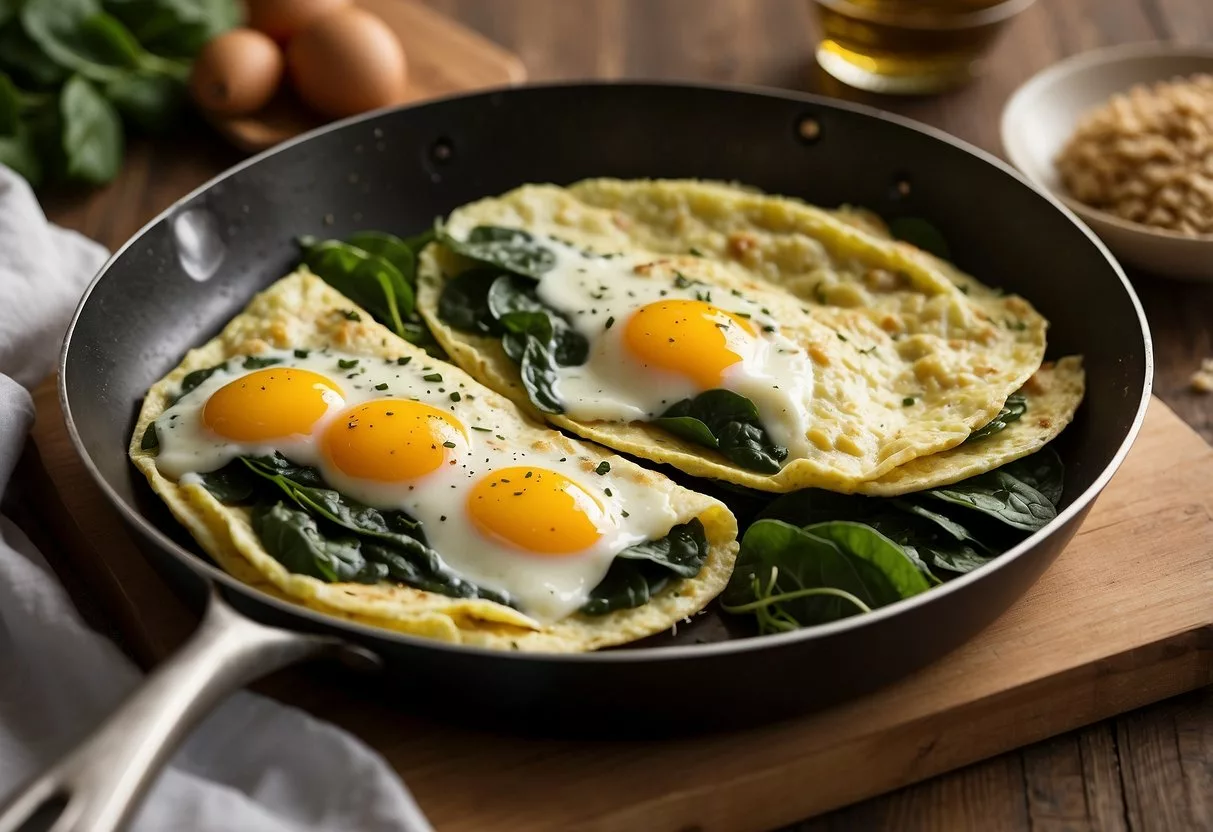
An egg-white omelet with spinach is a nutritious breakfast option for people with insulin resistance. This dish is low in calories and carbohydrates, making it ideal for managing blood sugar levels.
To prepare this omelet, start by whisking egg whites until frothy. Season with a pinch of salt and pepper for added flavor.
Next, heat a non-stick skillet over medium heat. Add fresh spinach leaves and cook until they wilt. This step adds valuable nutrients and fiber to the meal.
Pour the whisked egg whites over the spinach in the pan. Cook until the edges start to set. Gently lift the sides to allow uncooked egg to flow underneath.
Once the omelet is nearly set, fold it in half. Cook for another minute to ensure it’s fully cooked through. The result is a fluffy, protein-rich breakfast that’s both satisfying and blood sugar-friendly.
For extra flavor and nutrients, consider adding other low-carb vegetables like tomatoes or mushrooms. A sprinkle of feta cheese can also enhance the taste without significantly impacting blood sugar levels.
2) Greek yogurt with chia seeds
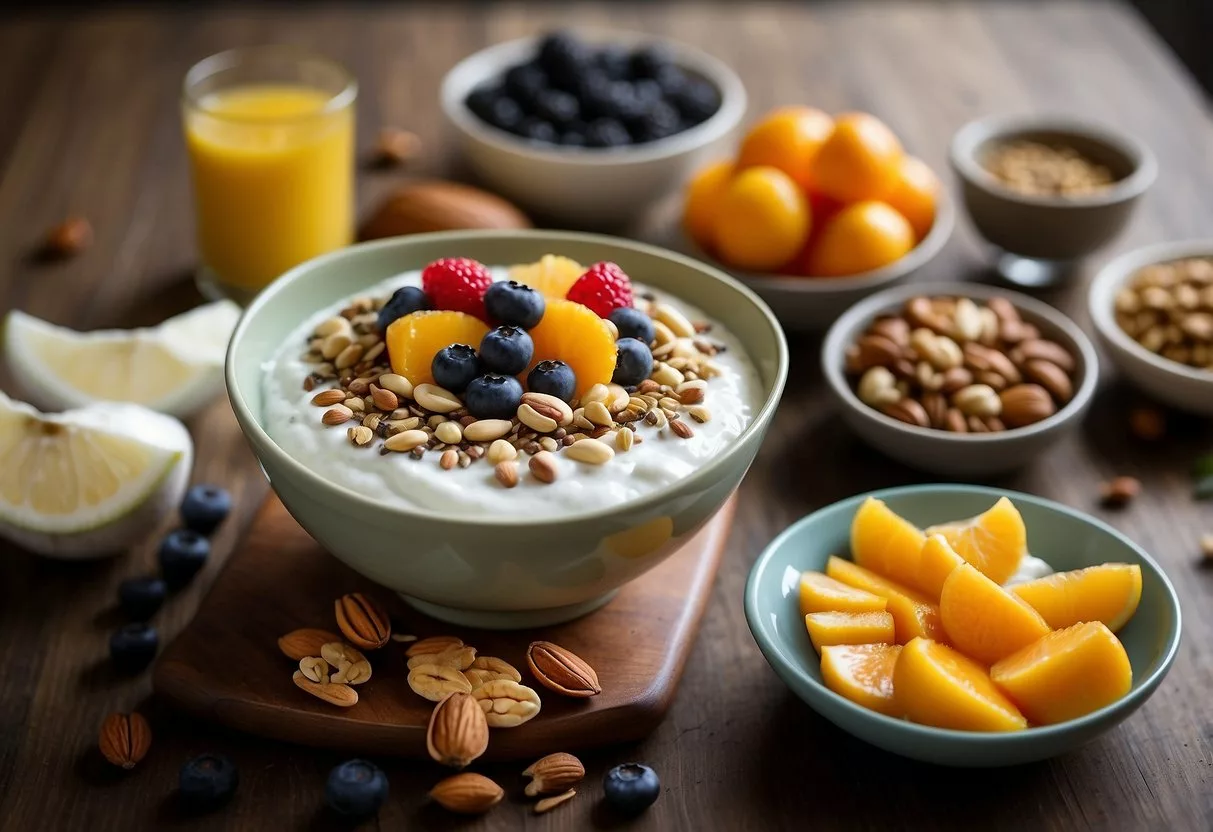
Greek yogurt with chia seeds is a tasty and healthy breakfast option for people with insulin resistance. This meal combines protein-rich Greek yogurt with fiber-packed chia seeds.
Greek yogurt is low in carbs and high in protein. It helps keep blood sugar levels steady and promotes feelings of fullness. Choose plain, unsweetened Greek yogurt to avoid added sugars.
Chia seeds are tiny nutritional powerhouses. They’re full of fiber, protein, and omega-3 fatty acids. These seeds can help slow down digestion and prevent blood sugar spikes.
To make this breakfast, mix a cup of Greek yogurt with one to two tablespoons of chia seeds. Let it sit for a few minutes to allow the chia seeds to absorb some liquid and soften.
For extra flavor and nutrients, add some berries or nuts[4]. These toppings provide antioxidants and healthy fats without adding too many carbs.
This simple breakfast is quick to prepare and can be made ahead of time. It’s a great choice for busy mornings or when you need a portable meal.
3) Avocado toast on whole grain bread
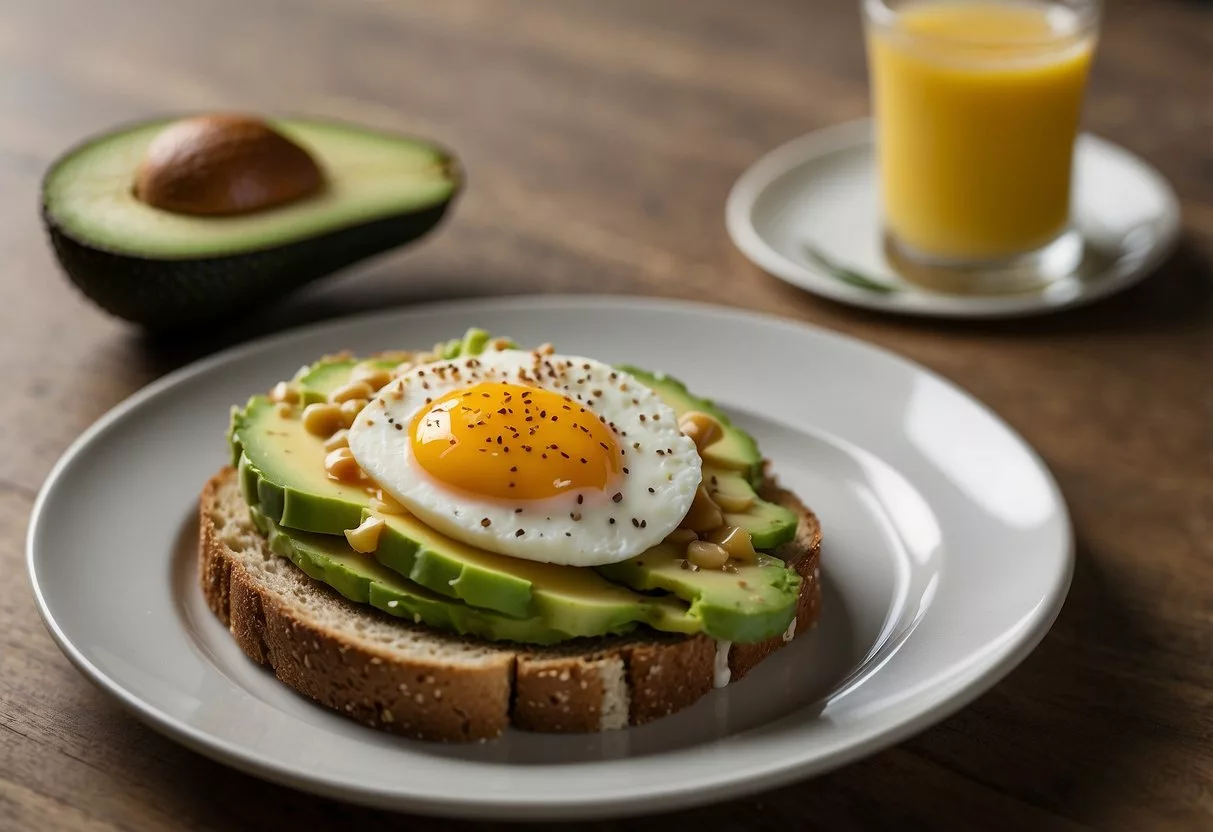
Avocado toast on whole grain bread is a nutritious breakfast option for people with insulin resistance. This simple meal combines complex carbohydrates with healthy fats and fiber.
Whole grain bread provides a steady release of energy, helping to maintain stable blood sugar levels. It also contains more nutrients and fiber than white bread.
Avocados are rich in monounsaturated fats, which can improve insulin sensitivity. They also contain fiber, which slows down digestion and helps prevent blood sugar spikes.
To make this breakfast, toast a slice of whole grain bread and top it with mashed avocado. For extra flavor and nutrition, one can add toppings like sliced tomatoes, a sprinkle of seeds, or a poached egg.
This meal is quick to prepare and easily customizable. It can be made more filling by adding extra protein sources like smoked salmon or turkey slices.
Avocado toast on whole grain bread provides a balanced mix of nutrients that can help manage blood sugar levels and keep a person feeling full until their next meal.
4) Berry smoothie with flaxseeds
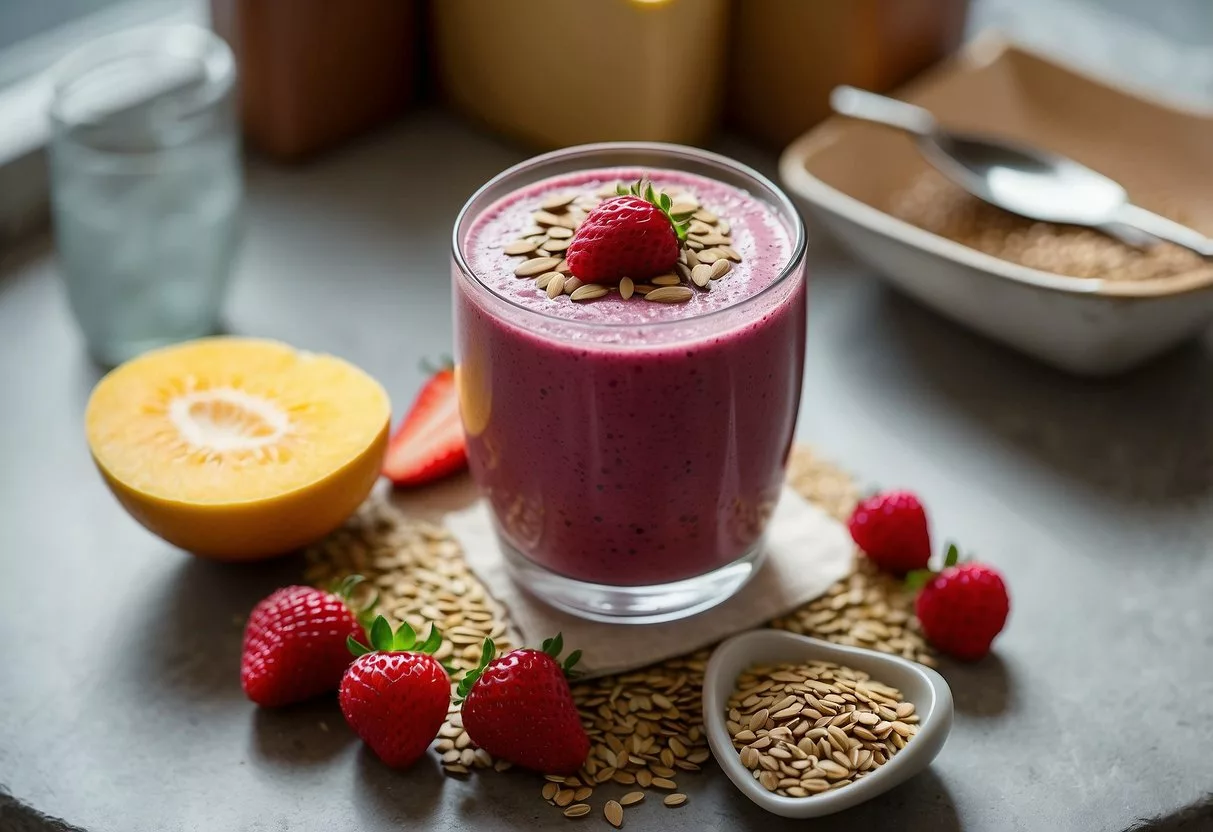
A berry smoothie with flaxseeds is a tasty and nutritious breakfast option for people with insulin resistance. This drink combines the natural sweetness of berries with the health benefits of flaxseeds.
Berries are low in sugar and high in fiber, making them a good choice for managing blood sugar levels. They also contain antioxidants that may help reduce inflammation.
Flaxseeds are rich in omega-3 fatty acids and lignans, which can improve insulin sensitivity. They also provide fiber, which slows down digestion and helps prevent blood sugar spikes.
To make this smoothie, blend mixed berries, ground flaxseeds, and unsweetened almond milk. Adding a scoop of protein powder can help balance the meal and keep you feeling full longer.
For extra nutrition, consider including spinach or Greek yogurt in the smoothie. These ingredients add more protein and nutrients without significantly affecting the taste.
This smoothie is quick to prepare and can be customized to suit individual preferences. It provides a balanced mix of carbohydrates, protein, and healthy fats, making it an ideal breakfast for those managing insulin resistance.
5) Oatmeal with nuts and berries
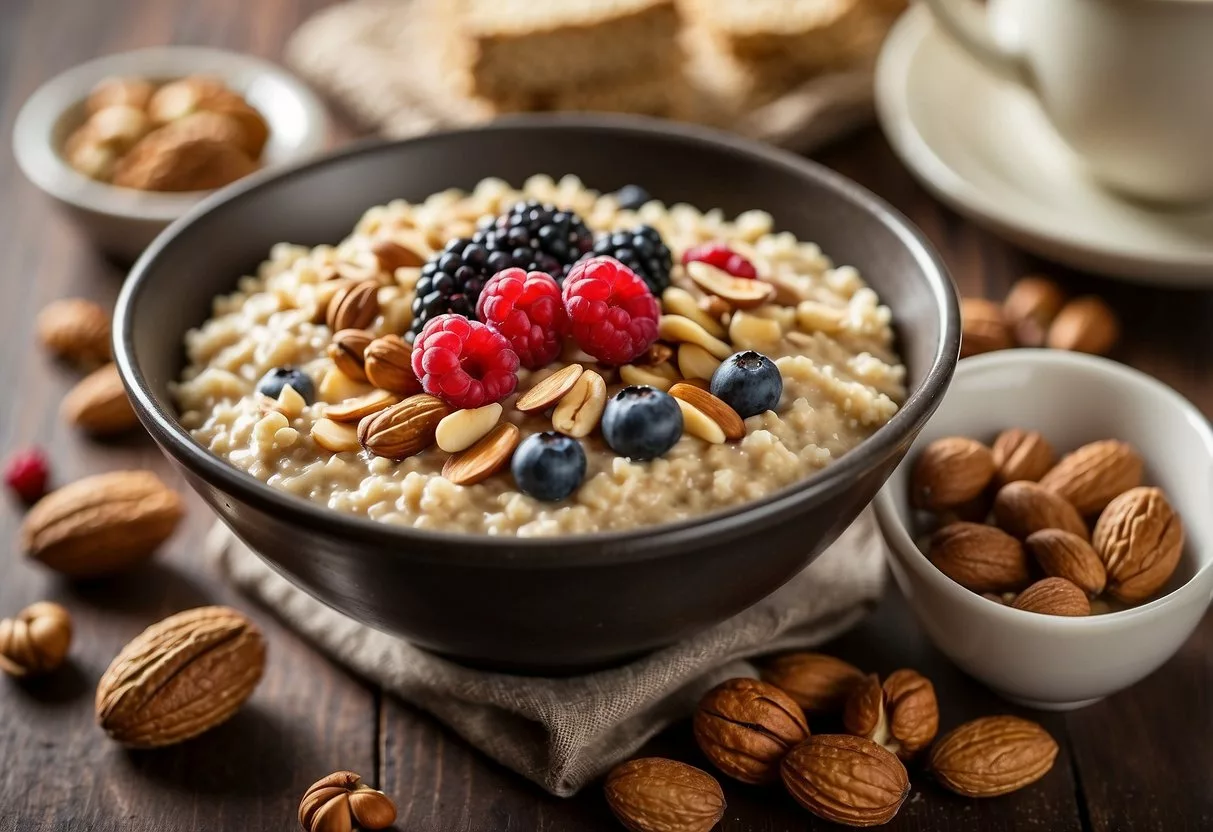
Oatmeal with nuts and berries is a nutritious breakfast option for people with insulin resistance. This meal combines complex carbohydrates, healthy fats, and fiber to help regulate blood sugar levels.
Oats are a great choice because they have a low glycemic index. This means they don’t cause rapid spikes in blood sugar. Oatmeal is also packed with fiber, which slows down digestion and helps control insulin levels.
Adding nuts to oatmeal provides healthy fats and protein. These nutrients can further slow digestion and help maintain steady blood sugar levels. Almonds, walnuts, or pecans are excellent choices.
Berries are a smart addition to this breakfast. They’re low in sugar compared to other fruits and high in antioxidants. Blueberries, strawberries, or raspberries can add natural sweetness without causing insulin spikes.
To prepare this meal, one can cook oats with water or milk. After cooking, they can top the oatmeal with a handful of mixed berries and a sprinkle of chopped nuts. This creates a balanced, insulin-friendly breakfast that’s both tasty and satisfying.
6) Scrambled tofu with vegetables
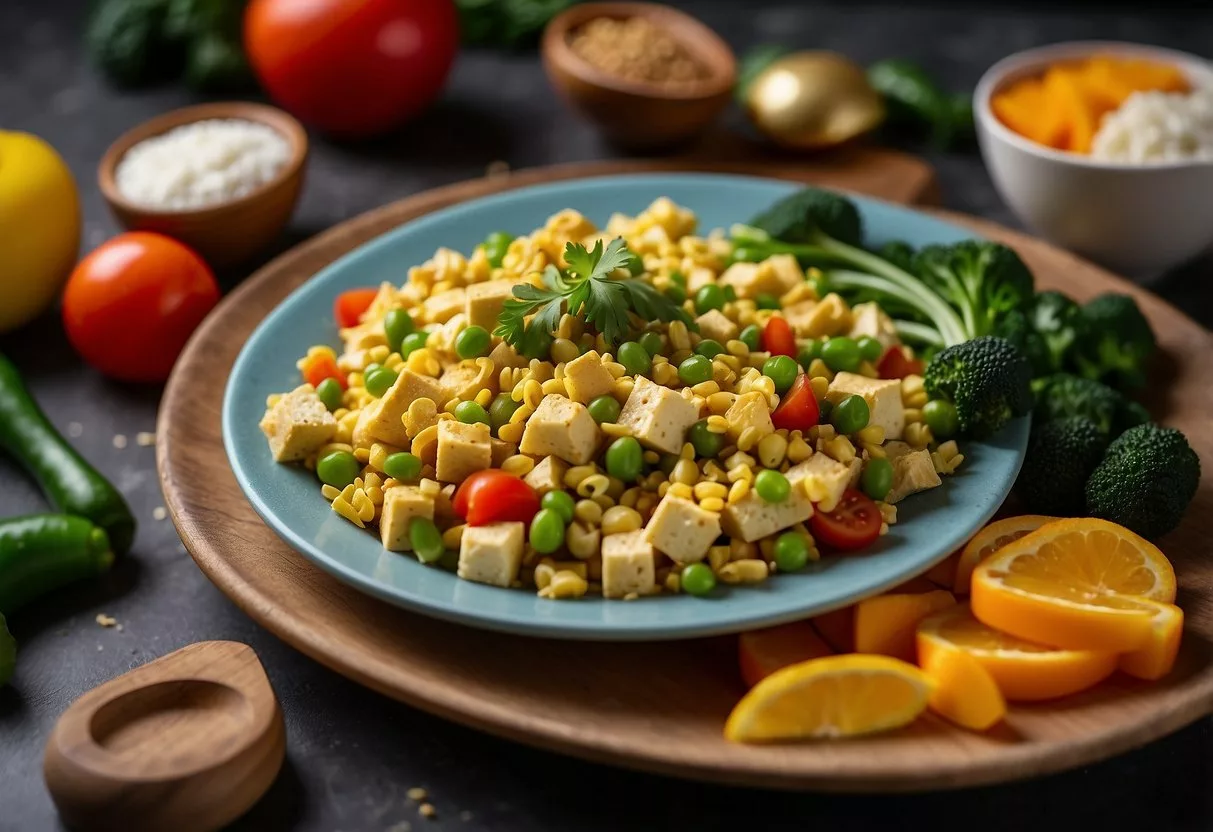
Scrambled tofu with vegetables is a tasty and nutritious breakfast option for people with insulin resistance. This dish is low in carbohydrates and high in protein, making it an excellent choice to help manage blood sugar levels.
To make this meal, start by crumbling firm tofu into a bowl. Add turmeric for a yellow color and black salt (kala namak) for an eggy flavor. Heat oil in a pan and sauté diced onions, bell peppers, and mushrooms until soft.
Add the seasoned tofu to the pan with the vegetables and cook for about 5-7 minutes. Stir occasionally to prevent sticking. The result is a flavorful and filling breakfast that closely mimics scrambled eggs.
For added nutrition, consider including spinach or kale in the mix. These leafy greens are rich in vitamins and minerals while being low in carbohydrates. They can help increase the fiber content of the meal, which is beneficial for insulin resistance.
This breakfast is versatile and can be customized with various vegetables and seasonings. It’s a great way to start the day with a balanced, insulin-friendly meal.
7) Cottage cheese with pineapple chunks
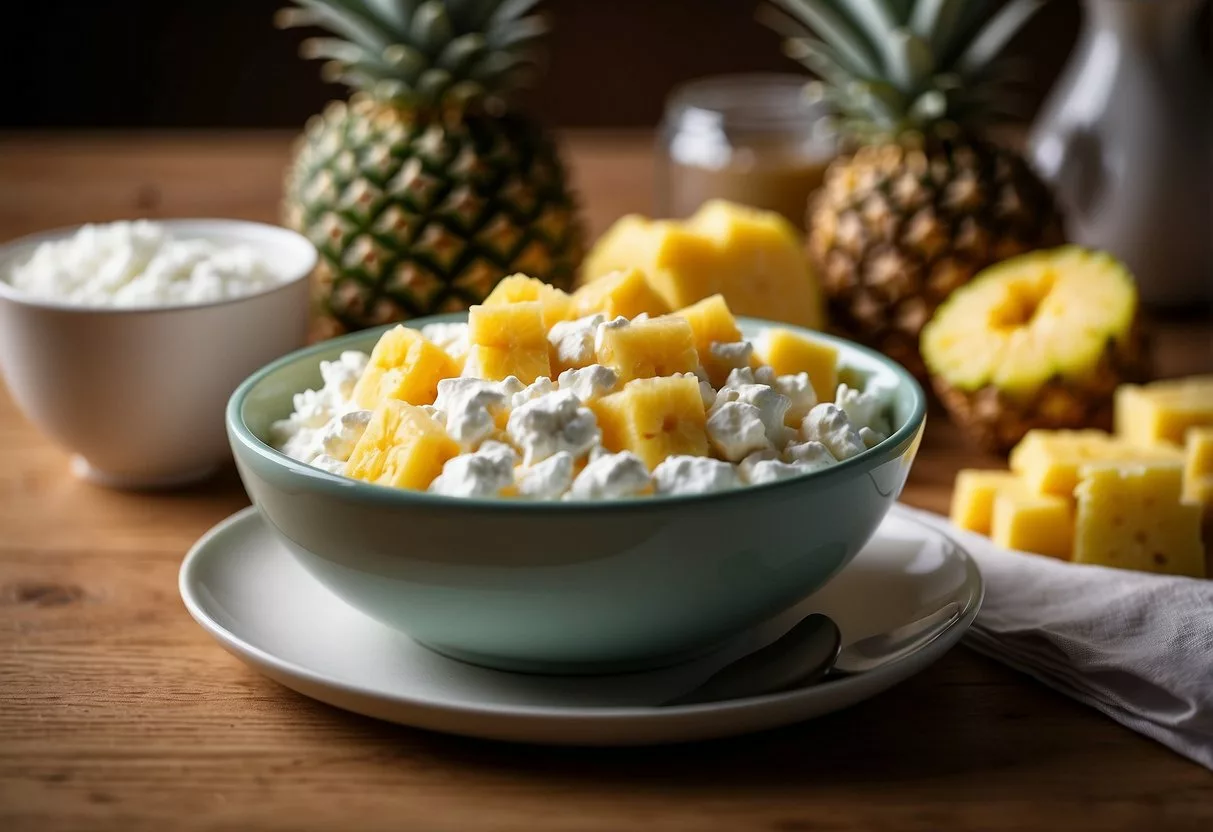
Cottage cheese with pineapple chunks is a tasty and nutritious breakfast option for people with insulin resistance. This simple dish combines protein-rich cottage cheese with sweet, fresh pineapple for a balanced meal.
Cottage cheese is high in protein and low in carbohydrates. It helps stabilize blood sugar levels and keeps you feeling full longer. The protein in cottage cheese also supports muscle health and metabolism.
Pineapple adds natural sweetness and important nutrients to the meal. It contains vitamins, minerals, and fiber. The fiber in pineapple slows down digestion, which can help prevent blood sugar spikes.
To prepare this dish, simply add cottage cheese and pineapple chunks to a bowl. Mix them together gently. For extra flavor and crunch, consider adding a small handful of chopped nuts like walnuts.
This breakfast provides a good balance of protein, carbs, and healthy fats. It’s quick to make and can be easily customized. Try using different fruits or adding a sprinkle of cinnamon for variety.
8) Smoked salmon on rye crackers
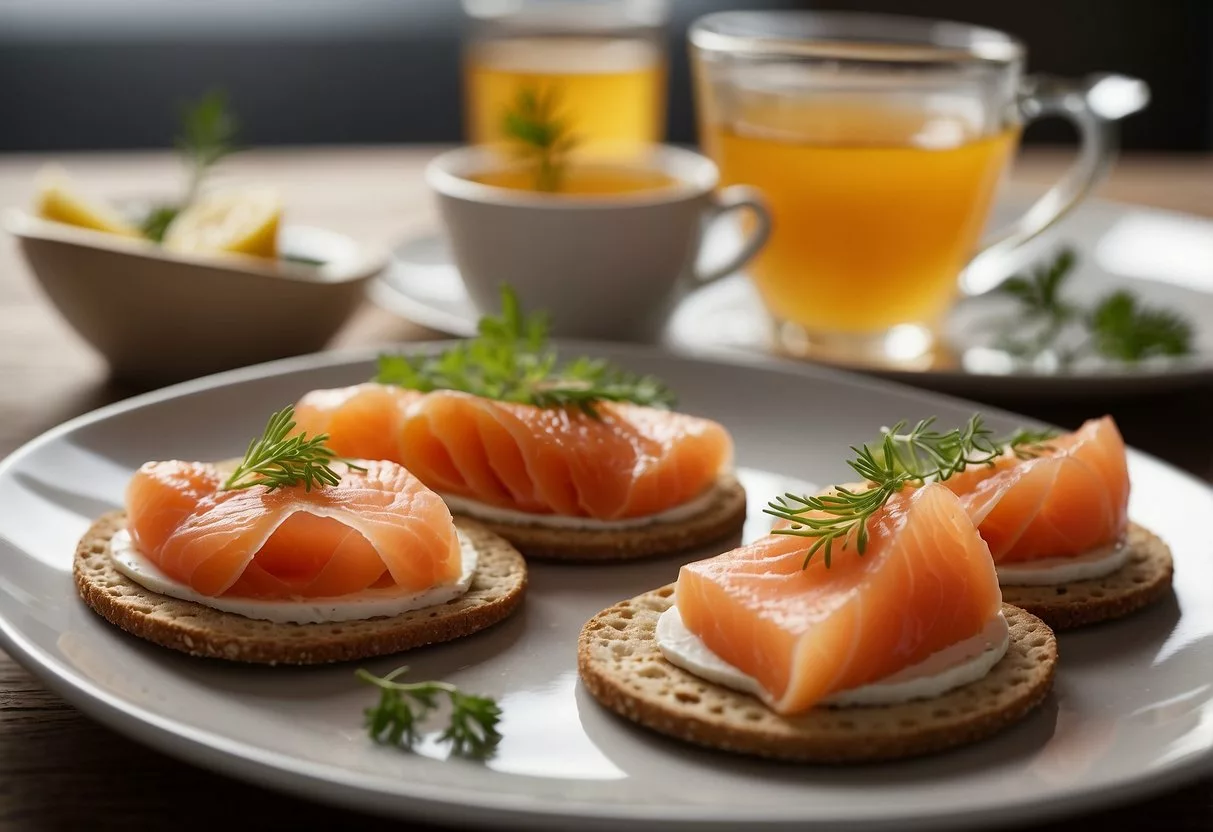
Smoked salmon on rye crackers is a tasty and insulin-friendly breakfast option. This meal combines protein-rich salmon with fiber-filled rye crackers, creating a balanced start to the day.
Rye crackers have a lower glycemic index compared to white bread. This means they cause a slower rise in blood sugar levels, which is beneficial for those with insulin resistance.
Smoked salmon provides high-quality protein and omega-3 fatty acids. These nutrients help keep you feeling full and support overall health. The protein in salmon also aids in blood sugar regulation.
To prepare this breakfast, spread a thin layer of cream cheese on rye crackers. Top with slices of smoked salmon. For extra flavor and nutrition, add some sliced red onion and fresh dill.
This meal is quick to prepare and requires no cooking. It’s perfect for busy mornings when time is limited. The combination of flavors and textures makes it satisfying and enjoyable.
For added variety, try different types of smoked fish or experiment with various toppings. Capers, cucumber slices, or a squeeze of lemon can add extra zest to this simple yet delicious breakfast.
9) Whole grain pancakes with almond butter
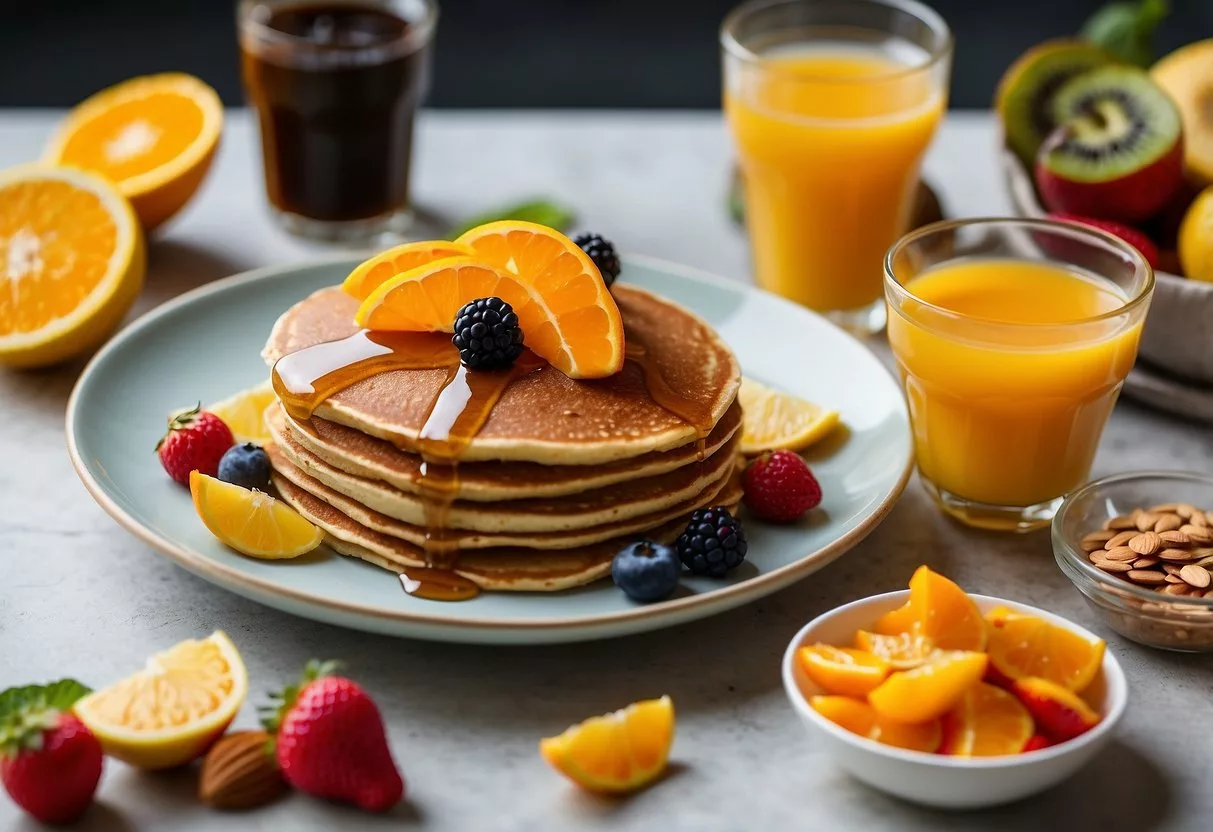
Whole grain pancakes with almond butter make a tasty breakfast for those with insulin resistance. These pancakes use whole grain flour instead of refined white flour. Whole grains have more fiber and nutrients.
The fiber in whole grains slows down digestion. This helps keep blood sugar levels steady. Almond butter adds healthy fats and protein to the meal. These nutrients also help balance blood sugar.
To make the pancakes, mix whole wheat flour with baking powder, a pinch of salt, and an egg. Add milk and a little oil, then cook on a griddle. Top with a spoonful of almond butter.
Fresh berries make a good topping too. Berries are low in sugar but high in antioxidants. For extra protein, add some Greek yogurt on the side.
This breakfast has a good mix of complex carbs, protein, and healthy fats. It can help keep you full and energized. The whole grains and almond butter may also improve insulin sensitivity over time.
10) Quinoa breakfast bowl with veggies
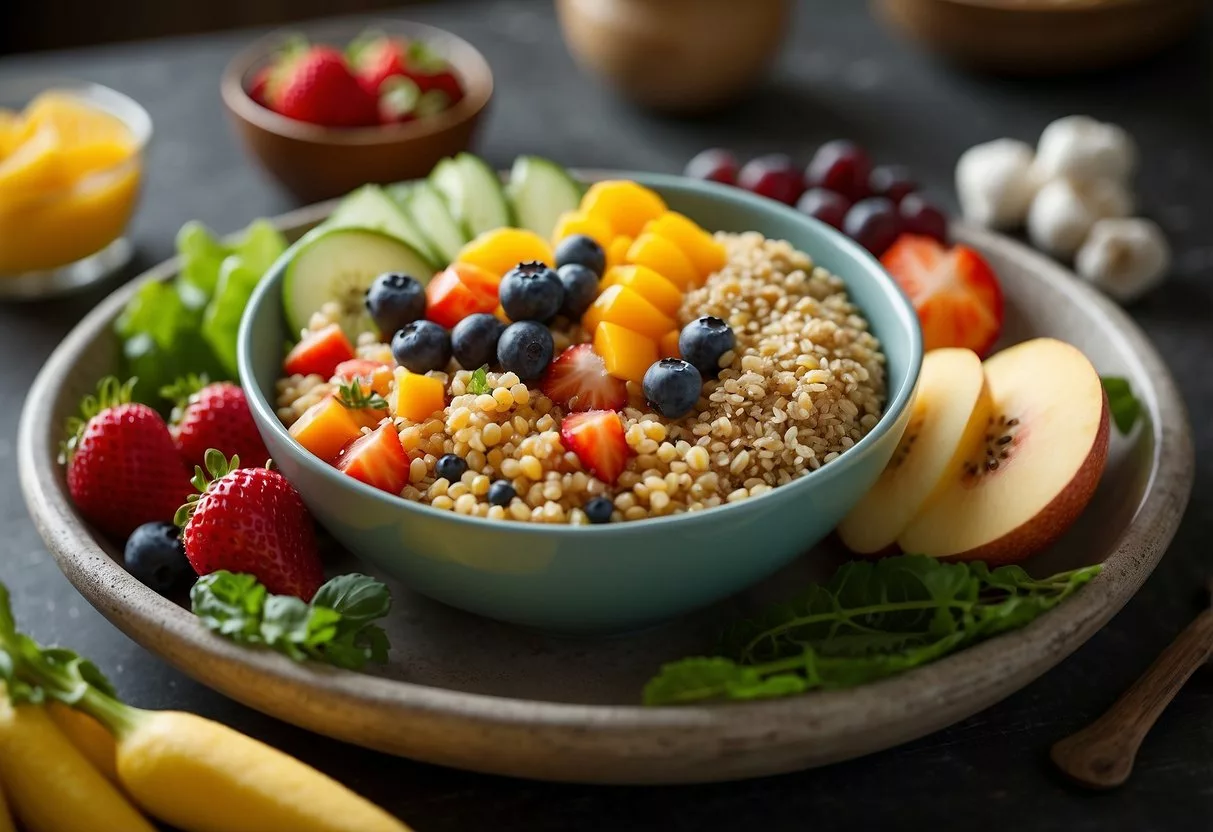
Quinoa breakfast bowls with veggies are a great choice for people with insulin resistance. These bowls combine protein-rich quinoa with fiber-packed vegetables to help balance blood sugar levels.
To make this dish, start by cooking quinoa according to package instructions. While it’s cooling, prepare a variety of colorful vegetables like spinach, bell peppers, and tomatoes.
Mix the cooked quinoa with the chopped veggies in a bowl. For added flavor and nutrition, consider including some healthy fats like avocado slices.
A sprinkle of herbs or a dash of lemon juice can enhance the taste without adding extra sugar. This breakfast option is not only nutritious but also very filling, which can help prevent mid-morning snacking.
Quinoa breakfast bowls are versatile and can be customized to individual preferences. Try adding different vegetables or even some lean protein like eggs for variety.
This meal provides a good balance of complex carbohydrates, protein, and fiber. These nutrients work together to slow down digestion and help maintain steady blood sugar levels throughout the morning.
11) Chia pudding with mixed fruits
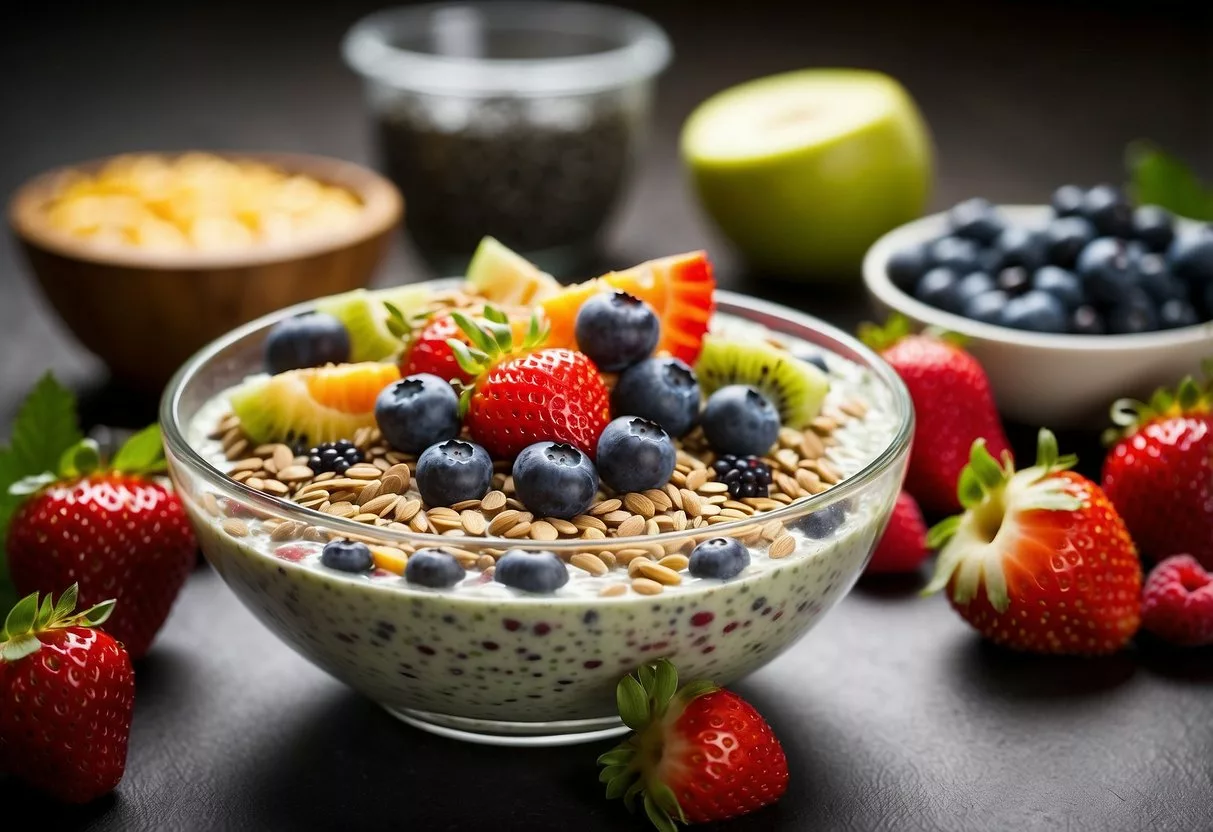
Chia pudding is a tasty and nutritious breakfast option for people with insulin resistance. This simple dish is easy to prepare and can be customized with various fruits and toppings.
To make chia pudding, mix chia seeds with milk or a milk alternative. The mixture thickens as the seeds absorb the liquid, creating a pudding-like texture. Refrigerate overnight for best results.
Chia seeds are rich in fiber and protein, which can help stabilize blood sugar levels. They also contain omega-3 fatty acids, which may improve insulin sensitivity.
Top the chia pudding with a variety of mixed fruits for added flavor and nutrients. Berries, such as strawberries, blueberries, and raspberries, are excellent choices due to their low glycemic index.
Other fruit options include sliced peaches, diced apples, or cubed melon. These fruits provide vitamins, minerals, and antioxidants while adding natural sweetness to the pudding.
For extra protein and healthy fats, consider adding chopped nuts or a dollop of Greek yogurt. These additions can help create a more balanced meal and promote satiety.
12) Whole-grain waffles with sugar-free syrup
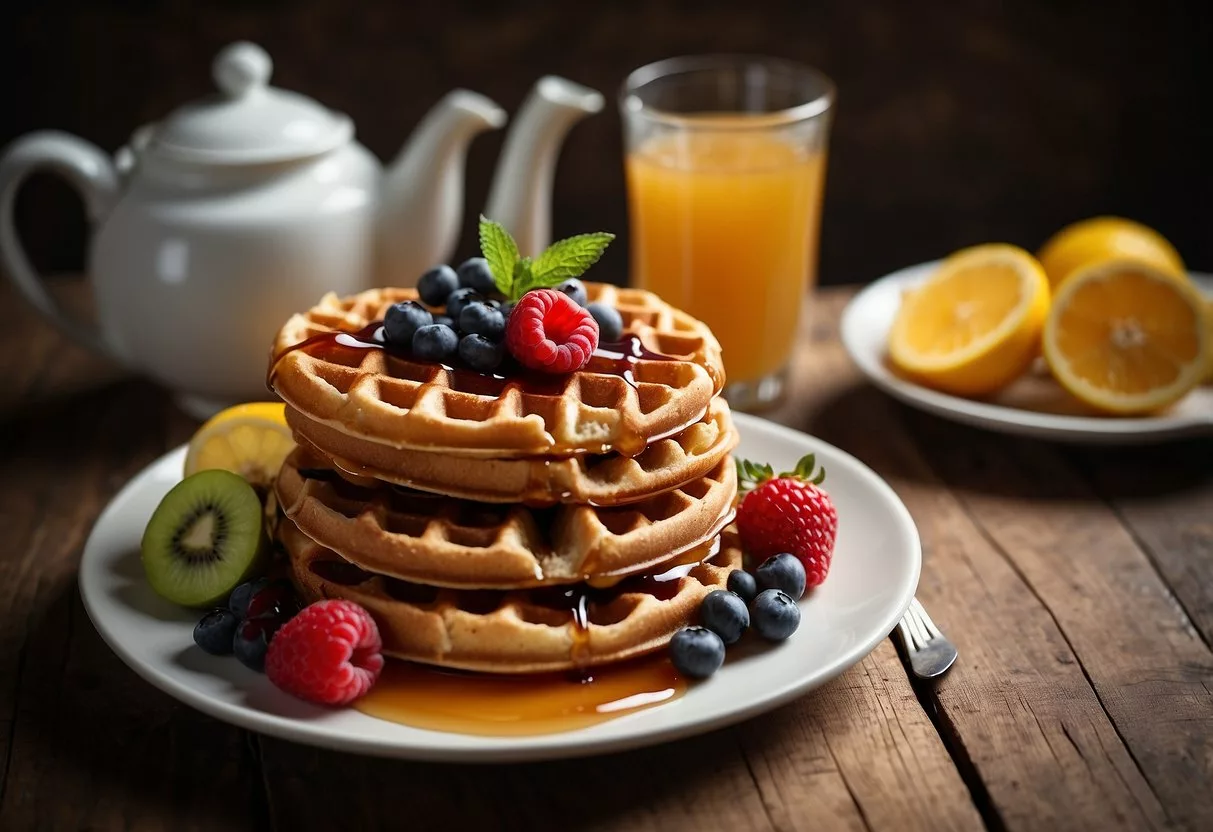
Whole-grain waffles with sugar-free syrup make a tasty and healthy breakfast option for people with insulin resistance. These waffles use whole wheat flour instead of refined white flour, which provides more fiber and nutrients.
Whole wheat flour adds extra nutritional value[5] to the waffles. It contains more vitamins, minerals, and fiber than regular white flour. This helps slow down digestion and prevents blood sugar spikes.
To make the waffles, one can mix whole wheat flour with eggs, milk, and a small amount of oil. Some recipes also include ingredients like flaxseed meal or wheat germ for added nutrition.
Cooking the waffles in a preheated waffle iron[6] results in a crispy exterior and fluffy interior. The cooking time may vary depending on the waffle iron used.
For the topping, sugar-free syrup is a good choice. It provides sweetness without adding extra sugar or calories. People can also try fresh berries or a small amount of nut butter as alternatives.
This breakfast option offers a good balance of complex carbohydrates, protein, and healthy fats. It can help maintain stable blood sugar levels throughout the morning.
13) Veggie and cheese breakfast burrito
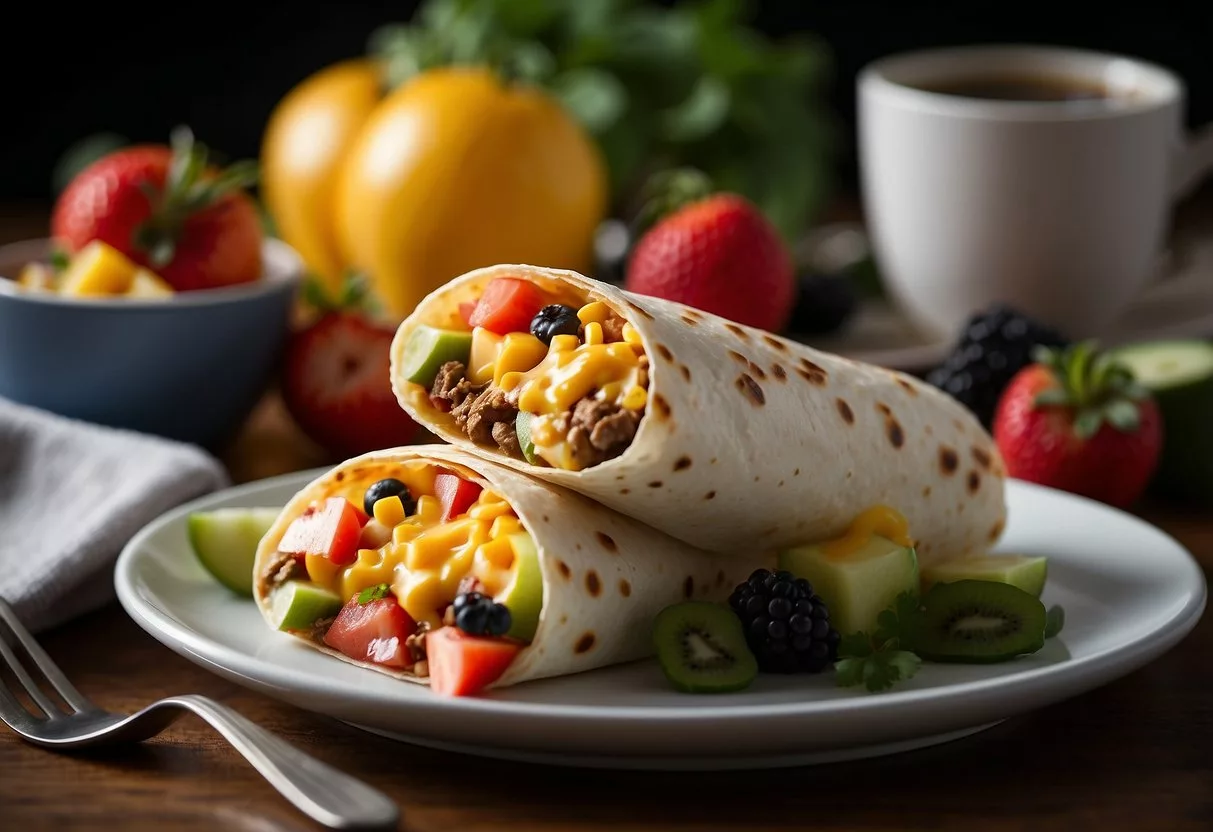
Breakfast burritos can be a tasty option for people with insulin resistance. A veggie and cheese version offers a good balance of nutrients without excess carbs.
Start with a whole wheat tortilla for fiber. Fill it with scrambled eggs or egg whites for protein. Add sautéed veggies like bell peppers, onions, and spinach.
Sprinkle on a moderate amount of cheese. Cheddar or feta work well. The cheese adds flavor and some fat to slow digestion.
For extra nutrition, include black beans. They’re high in fiber and protein. A dollop of Greek yogurt can replace sour cream.
Keep portions reasonable. One medium burrito is usually enough. Pair it with some fresh fruit on the side for a complete meal.
This breakfast provides protein, healthy fats, and complex carbs. It can help keep blood sugar levels steady throughout the morning.
14) Low-fat yogurt with walnuts
Low-fat yogurt with walnuts is a simple yet effective breakfast for people with insulin resistance. This combination provides a good balance of protein, healthy fats, and carbohydrates.
Plain, low-fat yogurt is an excellent source of protein and calcium. It has a lower sugar content compared to flavored varieties, making it a better choice for managing blood sugar levels.
Walnuts add heart-healthy omega-3 fatty acids and fiber to the meal. These nutrients can help slow down digestion and reduce spikes in blood sugar after eating.
To prepare this breakfast, start with a cup of plain, low-fat Greek yogurt. Greek yogurt is strained, resulting in a thicker consistency and higher protein content than regular yogurt.
Add a handful of chopped walnuts to the yogurt. For extra flavor and nutrients, consider topping with a small amount of fresh berries. Berries are low in sugar and high in antioxidants, making them a good choice for people with insulin resistance.
This breakfast is quick to prepare and can be easily customized. It provides a good mix of nutrients to help manage blood sugar levels and keep you feeling full throughout the morning.
15) Smoothie bowl with spinach and avocado
A smoothie bowl with spinach and avocado is a nutritious breakfast option for people with insulin resistance. This meal combines fiber-rich vegetables with healthy fats to help stabilize blood sugar levels.
The base of the smoothie bowl includes fresh spinach and ripe avocado. Spinach provides vitamins and minerals, while avocado adds creamy texture and healthy fats[7].
To make the smoothie, blend spinach, avocado, and unsweetened almond milk until smooth. Pour the mixture into a bowl and add toppings for extra flavor and nutrients.
Suggested toppings include chia seeds, sliced almonds, and a small amount of berries. These additions provide protein, fiber, and antioxidants without significantly impacting blood sugar.
For added protein, one can include a scoop of vanilla protein powder[7] in the smoothie base. This helps create a more balanced meal and promotes feelings of fullness.
The smoothie bowl’s ingredients work together to provide a filling breakfast that’s gentle on blood sugar levels. It’s important to keep portion sizes moderate, especially for the fruit toppings.
Understanding Insulin Resistance
Insulin resistance is a health condition that affects blood sugar control. It can lead to serious issues if left unchecked. Learning about its causes, symptoms, and diagnosis is key for proper management.
What is Insulin Resistance?
Insulin resistance happens when cells in the body don’t respond well to insulin. Insulin is a hormone that helps move sugar from the blood into cells for energy. When cells resist insulin, blood sugar levels rise.
The pancreas tries to fix this by making more insulin. Over time, this can wear out the pancreas. High blood sugar can damage blood vessels and nerves. It also raises the risk of type 2 diabetes and heart disease.
Diet plays a big role[8] in managing insulin resistance. Eating foods that don’t cause quick spikes in blood sugar can help. This includes whole grains, lean proteins, and healthy fats.
Symptoms and Diagnosis
Insulin resistance often has no clear signs at first. As it gets worse, some people may notice:
- Feeling very tired
- Increased thirst and urination
- Dark patches of skin, usually on the neck or armpits
Doctors can check for insulin resistance with blood tests. These tests look at fasting blood sugar, insulin levels, and A1C. A1C shows average blood sugar over the past 3 months.
Eating a balanced breakfast[9] can help manage insulin resistance. Good choices include eggs, Greek yogurt, and oatmeal. These foods provide protein and fiber, which help control blood sugar.
Dietary Techniques for Managing Insulin Resistance
Eating the right foods and balancing nutrients can help control insulin resistance. These strategies focus on stabilizing blood sugar and improving insulin sensitivity.
Balancing Macronutrients
A balanced diet is key for managing insulin resistance. Aim for a mix of carbs, proteins, and fats at each meal.
Carbs should come from whole grains, fruits, and vegetables. These foods release sugar slowly into the bloodstream.
Lean proteins like chicken, fish, and tofu help build muscle and keep you full. They also have little effect on blood sugar.
Healthy fats from nuts, seeds, and olive oil can improve insulin sensitivity. They also slow down digestion, which helps control blood sugar spikes.
Glycemic Index and Its Importance
The glycemic index (GI) measures how quickly foods raise blood sugar. Low GI foods are better for insulin resistance[10].
High GI foods like white bread and sugary snacks cause rapid blood sugar spikes. These should be limited.
Low GI options include whole grains, legumes, and most fruits. They release sugar slowly, helping to keep blood sugar stable.
Pairing high GI foods with proteins or fats can lower the overall GI of a meal. This strategy can help manage blood sugar levels.
Incorporating Fiber-Rich Foods
Fiber is crucial for managing insulin resistance. It slows down digestion and helps control blood sugar levels.
Aim for at least 25-30 grams of fiber daily[11]. Good sources include:
- Vegetables: Broccoli, carrots, spinach
- Fruits: Apples, berries, pears
- Whole grains: Oats, quinoa, brown rice
- Legumes: Lentils, beans, chickpeas
Fiber also helps you feel full, which can aid in weight management. This is important as excess weight can worsen insulin resistance.
Common Ingredients Used in Breakfast Recipes
Breakfast recipes for people with insulin resistance often use specific ingredients to help manage blood sugar levels. These ingredients fall into two main categories: low glycemic index foods and healthy fats and proteins.
Low Glycemic Index Foods
Low glycemic index (GI) foods are essential for insulin-friendly breakfasts[12]. These foods release glucose slowly into the bloodstream, helping to prevent spikes in blood sugar levels.
Some common low GI ingredients include:
- Whole grains (oats, quinoa, barley)
- Berries (strawberries, blueberries, raspberries)
- Green leafy vegetables (spinach, kale)
- Apples and pears
- Greek yogurt
Oatmeal[13] is a popular breakfast choice. It’s high in fiber and can be topped with nuts or berries for added nutrition. Whole grain bread is another good option for toast or sandwiches.
Healthy Fats and Proteins
Including healthy fats and proteins in breakfast helps slow down digestion and provides lasting energy. These nutrients also help stabilize blood sugar levels.
Key ingredients in this category include:
- Eggs
- Nuts and seeds (almonds, chia seeds, flaxseeds)
- Avocado
- Olive oil
- Fatty fish (salmon, sardines)
Eggs are versatile[14] and packed with protein. They can be prepared in various ways, from boiled to scrambled. Nut butters are another excellent source of healthy fats and protein, perfect for spreading on whole grain toast or adding to smoothies.
Avocado is rich in monounsaturated fats and fiber. It can be mashed on toast or added to smoothies for a creamy texture.
Frequently Asked Questions
People managing insulin resistance have many nutritious breakfast options. The right foods can help stabilize blood sugar and provide lasting energy throughout the morning.
What are some nutritious breakfast options for those managing insulin resistance?
Egg-white omelets with spinach[12] are an excellent choice. They’re high in protein and low in carbs. Greek yogurt with chia seeds offers protein and fiber. Avocado toast on whole grain bread provides healthy fats and complex carbs.
Which breakfast foods can help stabilize blood sugar levels in diabetics?
Berry smoothies with flaxseeds blend fiber and antioxidants. Oatmeal with nuts and berries offers complex carbs and protein. These foods digest slowly, helping to keep blood sugar steady.
Can individuals with PCOS and insulin resistance find suitable breakfast recipes?
Yes. High-protein, low-carb breakfasts[15] work well for PCOS. Greek yogurt parfaits, vegetable frittatas, or chia seed puddings are good options. These meals help balance hormones and manage insulin levels.
How can someone prepare a diabetic-friendly breakfast without using eggs?
Overnight oats[13] with almond milk and berries are egg-free and diabetes-friendly. Whole grain toast with nut butter and sliced apple is another tasty option. Tofu scrambles can replace egg dishes.
What are some make-ahead breakfast ideas for people with diabetes?
Chia seed puddings can be prepared the night before. Overnight oats are another time-saving option. Veggie-packed frittatas[15] can be made in advance and reheated. These meals save time without sacrificing nutrition.
Are there any breakfast cereals considered safe for those with insulin resistance?
Some cereals can work for insulin resistance. Look for high-fiber, low-sugar options. Steel-cut oats, bran flakes, or unsweetened muesli are good choices. Adding nuts or seeds boosts protein and healthy fats.
References
- Sugar Defender. https://8e81c8fyct2y4n4c8aiki8qmct.hop.clickbank.net/?tid=breakfast1 Accessed October 21, 2025
- Sugar Defender. https://8e81c8fyct2y4n4c8aiki8qmct.hop.clickbank.net/?tid=breakfast2 Accessed October 21, 2025
- Sugar Defender. https://8e81c8fyct2y4n4c8aiki8qmct.hop.clickbank.net/?tid=breakfast3 Accessed October 21, 2025
- berries or nuts. https://www.eatingwell.com/gallery/7964986/anti-inflammatory-diabetes-friendly-breakfast-recipes/ Accessed October 21, 2025
- The Best Healthy Waffles. https://www.wholesomerecipebox.com/best-healthy-waffles/ Accessed October 21, 2025
- Whole Wheat Waffle Recipe {No Sugar Added}. https://amindfullmom.com/100-whole-wheat-waffles-with-no-added-sugar/ Accessed October 21, 2025
- Spinach Avocado Smoothie Recipe with Protein. https://www.justthewoods.com/spinach-avocado-smoothie/ Accessed October 21, 2025
- The 11 Best Insulin Resistance Recipes For Blood Sugar Balance - Erin Palinski-Wade. https://erinpalinski.com/insulin-resistance-recipes/ Accessed October 21, 2025
- Top 10 Insulin-Friendly Breakfast Ideas to Manage Insulin Resistance. http://pennqueendiner.com/best-breakfast-for-insulin-resistance-top-choices-to-manage-blood-sugar/ Accessed October 21, 2025
- Low GI foods are better for insulin resistance. https://www.eatingwell.com/article/8027946/meal-plan-for-insulin-resistance/ Accessed October 21, 2025
- Aim for at least 25-30 grams of fiber daily. https://www.eatingwell.com/7-day-no-sugar-high-fiber-meal-plan-for-insulin-resistance-8364924 Accessed October 21, 2025
- 8 Breakfast Ideas For Insulin Resistance — EAT RUN LIFT. https://eatrunlift.me/eat-run-lift/insulin-breakfast Accessed October 21, 2025
- Oatmeal. https://www.allrecipes.com/gallery/diabetic-breakfast-recipes/ Accessed October 21, 2025
- 14 Best Breakfast Foods for People with Diabetes. https://www.healthline.com/nutrition/breakfast-foods-for-diabetics Accessed October 21, 2025
- 20+ Insulin Resistance Recipes for Balanced, Nourishing Meals. https://rbitzer.com/insulin-resistance-recipes/ Accessed October 21, 2025
